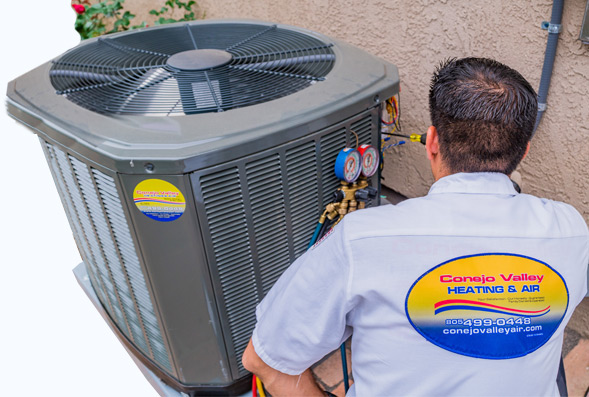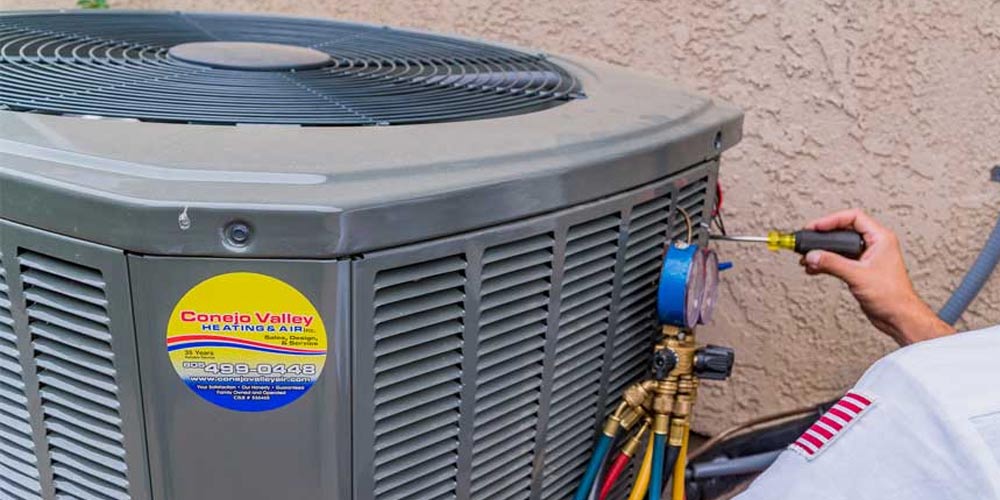Air Conditioner Installation
If you are looking at having a central air conditioner installed, either replacing what you have or having a new air conditioner installation, you’ll find that there are many resources with a lot of information available. It can be confusing and overwhelming. You may have a moment that you think about doing it yourself, which is possible, but it strongly not recommended.
Installing a new HVAC system without proper equipment, experience, and knowledge can be dangerous. It can be easy to cause damage to the system without knowing it and reduce the efficiency of the unit. You’ll end up calling a professional to fix it, and it ends up costing you more in the long run.
Before you hire a professional HVAC installer though, do your research so that you have a brief knowledge of what should take place. Get several quotes and examine the differences between them. Simply because one is more expensive, doesn’t mean it is the best. Nor do you want to go with the lowest quote automatically, you may get what you pay for, or you may get the best equipment and work.
Types of Air Conditioners
» A Split System:
This is the most common central air conditioning system in this country. This air conditioning system is referred to as a split system because it has two components. One component inside called the air handler. This component is the part where the blower motor and evaporator coil are installed. Then there is the outdoor component where the compressor and condenser coil are installed. Connecting the two components are electrical wires and refrigerant lines.
» A Heat Pump:
Heat pumps are like a split system, with the air handler inside, but on the outside is a heat pump cabinet. A heat pump cools or heats the house using geothermal, meaning it pulls air from the Earth instead of the air to heat the house and deposits warm air back into the Earth to cool the house.
» A Packaged Air Conditioner:
Packaged air conditioners have a combination of an electric air conditioning and a heat pump, or heat plus cooling equipment. This style of an air conditioner is typical of commercial structures, where the units are rooftop installed. They have a small footprint and are flexible to meet installation needs
» A Ductless Mini-Split:
A ductless mini-split system for cooling a business or resident is an excellent choice because there is no ductwork required for air distribution like the other system mentioned here. The outdoor air conditioner or heat pump component is connected to the air handling unit installed in each room that air and heat are needed. The homeowner can cool each room, or a specific area as required instead of the entire house.
Main Considerations to Install Air Conditioners
Each of these air conditioning systems has additional parts required, which we have a summary here:
» A New Duct System:
If there isn’t any ductwork already in place, you can go with a ductless system, or you’ll need a duct system installed. It is will be added expense, and the contractor should have it broke down in the quote. It also will require consideration of the space where it is to be installed and ran throughout the house.
» Air Duct System Repairs:
Existing air duct system may need altering, repairing, or replacing. If you’re looking at cutting corners to save money, this is not the place to do that. If there are air leaks, there is efficiency leaking too.
» The Indoor Air Quality:
A central air conditioning system will provide some dehumidification, but you may need more for your own needs and preference. While you’re having a new HVAC system installed, inquire what a whole-home dehumidifier added will cost for the best indoor air quality. Even if it is more money, it will be worthwhile in the long run.
AC Installation Cost
An HVAC installation is not cheap but considering that it will last you ten years or longer, you’ll have a high ROI. Pricing will vary from area to area, what size of unit you purchase, the brand, and the level of quality. The air ducts and a dehumidifier can increase the price.
Choosing an Air Conditioner Installer
After you have received three to four quotes, make a comparison of each. What all is included in the job, is the guarantee and warranty listed? Is the timeframe to complete the job stated? How much is the labor on each one, and is that for a 2-person job or a crew of several? Ask each one for current and recent references, then follow through and check each one.
Once you decide which HVAC contractor you want to work with, schedule another appointment for them to pick up your contract, and review the work with them again. Get a timeline from them for the job and get your house on their calendar. They may not be able to firm your dates until they have ordered the equipment.
DIY – How to Install an Air Conditioner
We recommend using a professional contractor to purchase and install an HVAC system. However, if you are a handy DIY homeowner, you may feel comfortable doing this yourself.
The first thing you need to do is choose the best location where both the interior and exterior components will be installed. Next is an essential list of things that need to be done when installing an HVAC system. The system you purchase will come with basic instructions. For more thorough instructions, there are videos online, and where you buy the components may offer advice, directions, and tips.
Things you need to do to install an HVAC system:
- Measure and remeasure the length of the refrigerant line to meet the configuration required for proper installation
- Measure and remeasure the drain line length
- Connect the electricity from the outside component to the inside to the thermostat
- Connect the thermostat
- Clear refrigerant lines of any contaminants
- Load the refrigerant in the new unit it isn’t charged already
- Test the system and verify all components are functioning without any leaks
Air Conditioner FAQs
1. How do I install the thermostat?
The first step is to turn the power off. If there is an existing thermostat, you’ll need to disconnect and remove it first. Then install the wall plate for the new thermostat and connect the wires. Thermostats come with instructions that will tell you what wire connects to other wires. Then you’ll need to install batteries. Test the system and make sure all is working.
2. What should I look for in an air conditioner contractor?
Never go with a contractor that provides a bid by phone without seeing your house first, and they should provide a written quote with the parts broken down and the labor listed in detail. Choose a contractor that has a solid reputation with experience. You want a contractor that provides current and recent references, certification, insurance, and license. Don’t accept without question a replacement unit that is exactly as your old unit. A newer unit will have better materials and quality, a better warranty.
3. How do I know which type of air conditioner is the best for my home?
The contractor you choose to work with should offer input and suggestions on which type of air conditioning unit is best for your home. If you’re in a small house with one or two people, the ductless mini-split may be the better option than a whole house HVAC system. If your home is multi-level, the conventional split system would be the better choice, and for a house with little to no property, a packaged air conditioner wouldn’t take up space in the limited yard.
4. For DIY installation, will I need any outside help?
A licensed contractor can only purchase the refrigerant used in an HVAC system. You may need to pay for a professional HVAC technician to buy and charge the system for you. You may need a building permit from your local jurisdiction, which will require approval before you can use the system.
5. Will there be any warranty issues if I install the unit myself?
A warranty can vary between manufacturers, and you should confirm this before you purchase the unit and install it yourself.












